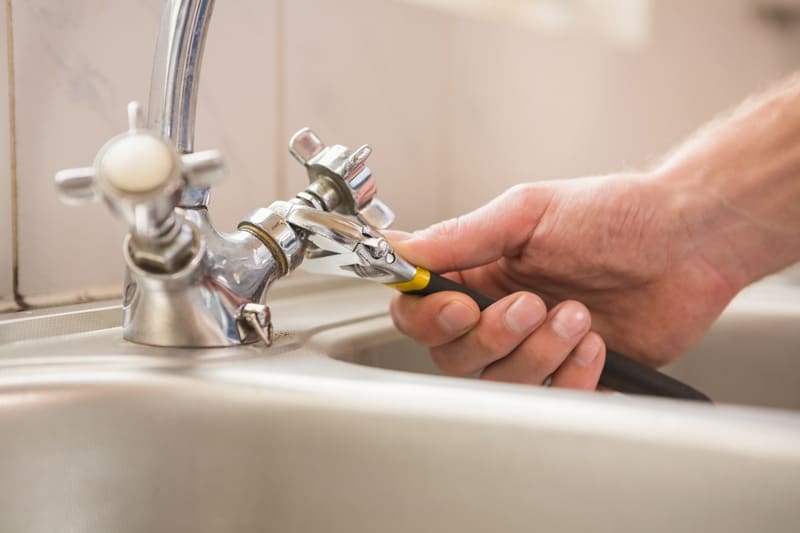10 Plumbing Tricks for DIY Plumbers

The following 10 plumbing tricks can be used to get you out of a minor plumbing emergency if you consider yourself a bit of a DIY plumber.
1. Reheat Solder When you Can’t Cut a Pipe
While cutting a pipe may be the best way to disconnect a soldered pipe, sometimes you can’t. Whether a cutting tool won’t fit or the pipe would be too short afterwards. The best way to avoid this is to heat the joint until the solder melts and pull off the fitting.
Make sure you have a wet rag with you to wipe away molten solder before it hardens. Sometimes it will work a charm the first time, other times you may have to sand the excess solder off.
2. Replace Metal Drain Lines with Plastic
While metal drains may look a lot more durable than plastic, the PVC option is better in every way. It’s cheaper, easier to install, won’t rust and easier to replace. When a leak develops, plastic will be easier to adjust or tighten.
3. Loosen Stuck Pipes with Heat
When your pipe won’t unscrew, heat sometimes does the job. Particularly on joints that have become sealed over time. Patience is key to get the metal hot enough, which can take a couple of minutes. Make sure you only do this for water and waste pipes only. Gas and fuel lines will have a much more explosive conclusion.
4. Piggyback Stubborn Shutoffs
Shutoff valves under toilets and sinks are often unreliable. Sometimes they won’t close properly, sometimes they won’t close at all. Fear not, there is a solution. Places like home hardware stores like Bunnings often carry shutoff valves that connect to your existing shutoff valve. Simply disconnect your supply line and attach the new valve.
5. Fix a Clog in Seconds
There’s no need to run a drain snake into a clogged pipe or take everything apart. Here’s a couple of things you could try first.
- Coat hanger
- Zip-ties
- Shaft pick up tool
- Wet/dry vacuum
6. Don’t Overtighten Supply Lines
While it is tempting to make sure the connections are as tight as humanly (or inhumanly) possible. Overtightening the supply is riskier than undertightening. A loose connection is easy to tighten but an overtight connection can wreck your seals and crack the threads.
7. Don’t Reuse Supply Lines
Sure, you can save some money on reusing the old supply lines when you’re replacing a toilet or tap. But you shouldn’t. Plastic degrades over time and a small leak can lead to major damage. It’s a minor risk but one that isn’t worth the worry. Buy new lines and on top of your plumbing being secure, it’ll also look shiny and new.
8. Don’t Fight It, Replace It
Don’t waste time and energy on O-ring repairs. If you feel a groove where the o-ring meets the spout, bite the bullet and get a new one. If you stick with the existing o-ring in that condition, you’ll never get a long lasting seal.
9. Get A Better Grip
Don’t ruin that tread by grinding down the setscrew. Use a hex socket and valve grinding compound to cleanly remove the setscrew.
Push the hex socket deep into the setscrew and pull then faucet handle with another. Loosen the screw by pulling quickly.
10. Cut Stubborn Parts
There’s a lot of water in a bathroom so mineral deposits and corrosion have super sticking powers, making them almost impossible to disconnect. Sometimes, all the tricks in the world can’t beat just cutting the thing off.
If you’re not the DIY kind of person and couldn’t implement these plumbing tricks, or want your plumbing done by a local Sunshine Coast expert plumber, call Jet Plumbing & Gas on 0418 911 757 or email us at info@jetplumbingandgas.com.au or via our contact page.
